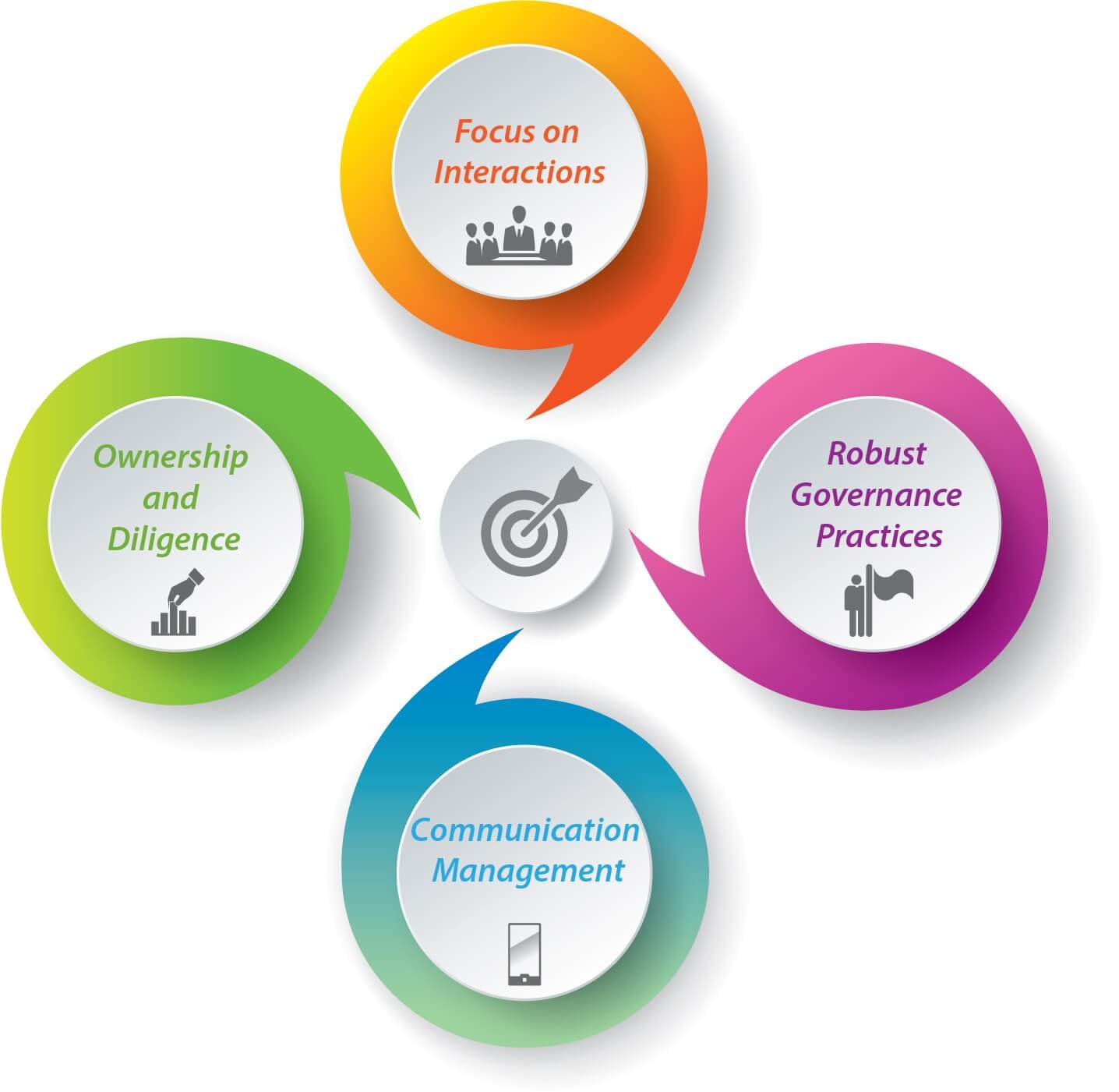This website uses cookies. By continuing to browse the site, you are agreeing to our use of cookies
How to Orchestrate Smooth Transition Management in Business Process Services
Business Process Services
June 18, 2018
Business Process Services (BPS) as an industry, is extremely fast moving and dynamic in nature. The transitions are fast and there is a need for them to happen even faster while controlling risks, with multiple moving parallel tracks. Various Client and Partner Operations teams and their support teams are involved. So, how does this tie up together. Enter…The Transition Team!
It’s the responsibility of the Transition team to provide seamless experience to the Client. The Transition Manager (TM) team would be involved in migrating the operations from their site / incumbent site to the partner location, whilst ensuring the requirements are gathered, processes are defined and timelines are met. They act as an enabler, supported by an army of individuals, none of whom report to the Transition Manager, and this is where the Art of Transition Management comes in. The softer aspects of Transition Management, which are difficult to measure.
But what makes one succeed in this role? The softer aspects or traits, this is what I would like to talk about, the art of project management, which I have observed in really successful Transition Managers. Also, these are certain things that we focus on in our team at Hexaware.

- Focus on Interactions: A cross functional team works on a single project and sometimes multiple projects. The Transition Manager is the cohesive bond which ties the team together. His/her positive interactions with the project team defines how the team responds, which would prove important when push comes to shove and the project is facing some risks, issues or God forbid – even red flags! Respecting the project team builds the morale of the team, as well, which proves important. Lastly, giving credit where it is due, is an important aspect of these interactions. Since, the TM front ends the transitions, the last but an important point to keep in mind is that all bouquets should be passed onto the teams, who may not always be in limelight, but work tirelessly to support the various deliverables
- Robust Governance Practices: One aspect that I feel, that works in all projects is not the mere presence of governance practices, but the rigour with which a Transition Manager drives them. With touch base calls at periodic intervals to the timeliness of publishing progress reports. If there is sufficient intensity in these, then the larger audience responds accordingly and you get to see progress more often than not. Close looping these meetings with prompt minutes, actions enhances the effectiveness of these practices. It doesn’t matter how busy your day is, ensure to send the minutes out the same day.
- Communication Management: This one is tricky, because it is difficult to determine start and end of it. But, in my experience – mailbox management is an important aspect. Quick responses from the Transition Manager on emails from client and internal teams, keeps the momentum going and ensures people are clued that the person is looking at the emails, as well as know that the person would pick up urgent and important ones immediately. Ensuring that the right people are marked in emails is another crucial point. In my experience, erring on the side of caution is good, so mark individuals in where you feel even remotely that they might have an impact. A RACI matrix definition helps, however a larger part of it also comes with some experience and proactiveness. Putting some thought into the distribution list of an important email, is a good practice to follow.
- Ownership and Diligence: Treating a Transition as your own, and ensuring you live and breathe it, is the best way to explain what I mean by Ownership. An entrepreneurial streak always helps. All aspects of a project are in the purview of a TM, and spending time preparing, planning and then tracking these becomes crucial. And this takes a lot of effort from the TM, long hours, ensuring that you are on top of all aspects of project. Diligence is what helps there, where you review your project plans on a weekly basis against actuals, plan for the week ahead, and close loop communications. But nothing is sweeter than when you send a Go Live note with all green and citing the highlights of the project. This is what you work towards, from the time the project is awarded right up to Go Live.
At the end of it, Transition management in a BPS environment is an exciting, action packed, fast paced role. The exposure one gets with the larger audience is amazing. But this visibility is a double edged sword and someone less able could have his flaws exposed to the same larger audience.
The science of Transition Management is the processes and frameworks that are defined to ensure these transitions happen seamlessly, incorporating best practises from various Project Management Principles and Six Sigma framework. These are tracked through various reports during the Transition lifecycle of a project.
Hexaware’s Transition Framework ‘TransX’ is based on the above logic of principles and guidelines, consists of six well defined phases starting from Inception Phase right up to Go Live and Monitoring phase (of the volume ramp up). Once steady state is achieved, the Cutover to BAU is done. Each of these phases has a set of pre-defined activities and deliverables, which are consciously evaluated for quality and timeliness through a set of robust governance practises. The effectiveness of these phases are enhanced, due to pre-defined entry and exit criteria, ensuring clarity of deliverables and the risk of missing deliverables are mitigated.
The other science of Transition Management is applying this methodology, in a customised manner to individual transitions. Each transition is unique, in the sense, it is governed by its set of constraints and risks. And thus the focus on the phases and its activities needs to be customised accordingly. This is done by introducing different approaches, practises, tools, as and when required.
Lastly, a good Transition Framework is continuously evolving in its science and art, incorporating latest technologies, methodologies, practices.
For one of Europe’s leading Telecom provider, Hexaware successfully transitioned 100% of the in-scope back office processes with Zero drop in Service level from day 1 and 100% on time completion of onsite & offshore knowledge transfer. And this is what we focus on at Hexaware to ensure we give the best seamless experience for every single transition that we do.
Author Bio:- Saurabh, Heads the Business Transition team globally at Hexaware’s BPS unit. A PMP & PRINCE 2 practitioner who has led numerous multi-million dollar project transition for global clients across verticals.
For more insights please feel free to connect with us on bps@hexaware.com
Related Blogs

From Manual to Machine: Maximizing Cost Savings with Intelligent Process Automation
- Business Process Services

Achieving Cost Efficiency Through Global Business Services Strategy
- Business Process Services

Generative AI for Marketing: The Future of Cost-effective Engagement
- Generative AI
- Business Process Services

Unlocking Generative AI for Hyper-personalized Customer Experiences
- Generative AI
- Business Process Services

Executive Administration Services: BFSI’s Right-hand Partner
- Generative AI
- Business Process Services

Generative AI in Customer Service: Going Beyond Traditional Chatbots
- Generative AI
- Business Process Services

Generative AI for Content Creation: The Future of Content Ops
- Business Process Services
- Generative AI
Fund Services Back Office Digitalization: A Transformation Long Overdue?
- Business Process Services

Mastering Customer Service Experience: Strategies for Success
- Business Process Services

The Rise of Omnichannel Customer Service: Unlocking Excellence in Customer Care
- Business Process Services

Ready to Pursue Opportunity?
Every outcome starts with a conversation







